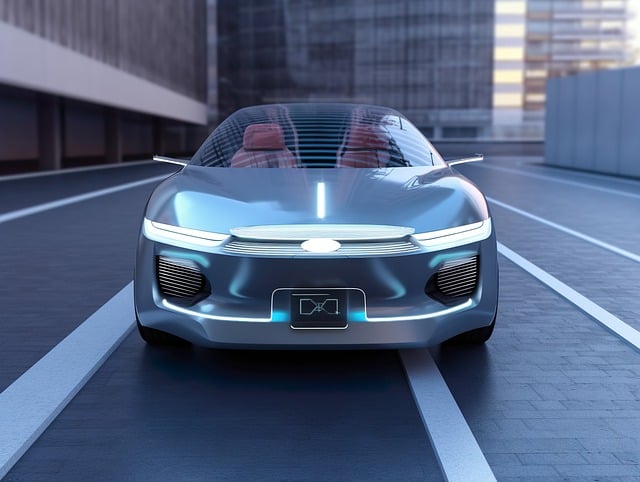By ATS Staff - July 9th, 2017
Latest Technologies
Autonomous vehicles (AVs), often referred to as self-driving cars, represent a transformative leap in technology that has the potential to revolutionize the way we travel, transport goods, and interact with urban environments. They promise increased safety, efficiency, and convenience, as well as a fundamental shift in how society approaches mobility.
What Are Autonomous Vehicles?
Autonomous vehicles are equipped with advanced sensors, cameras, radar, and artificial intelligence (AI) systems that allow them to navigate without human intervention. These technologies enable AVs to detect their surroundings, make decisions, and operate safely in various driving environments, from highways to crowded urban streets.
The Society of Automotive Engineers (SAE) defines six levels of vehicle automation, ranging from Level 0 (no automation) to Level 5 (full automation). Levels 1-3 involve varying degrees of driver assistance, where a human driver is still required to monitor or intervene. Levels 4 and 5 represent high and full automation, where the vehicle can operate entirely without human input in most or all situations.
How Do Autonomous Vehicles Work?
At the heart of AV technology are complex systems that rely on several key components:
- Sensors: These include cameras, radar, and lidar (light detection and ranging) to detect objects, pedestrians, and other vehicles. Lidar uses laser beams to create detailed 3D maps of the vehicle’s surroundings.
- AI and Machine Learning: AVs use sophisticated algorithms to process the data gathered by sensors. Machine learning allows the vehicle to recognize objects, predict movements, and make real-time decisions.
- GPS and Mapping: Autonomous vehicles rely on accurate GPS data and high-definition maps to understand their location and plan routes. This is combined with sensor data to help the vehicle navigate in real-time.
- Connectivity: Many AVs are connected to the cloud, allowing them to receive updates, access real-time traffic information, and communicate with other vehicles and infrastructure (a concept known as Vehicle-to-Everything or V2X communication).
Benefits of Autonomous Vehicles
- Improved Safety: Human error is responsible for more than 90% of traffic accidents. Autonomous vehicles have the potential to reduce accidents significantly by eliminating distractions, fatigue, and impaired driving. AVs are designed to follow traffic laws, maintain safe distances, and react faster than human drivers in dangerous situations.
- Increased Mobility: Autonomous vehicles could improve accessibility for individuals who are unable to drive due to age, disability, or other reasons. They offer the promise of mobility as a service (MaaS), where people can summon a self-driving car on demand.
- Traffic Efficiency: AVs can communicate with each other and with traffic systems, reducing congestion and optimizing traffic flow. By anticipating and adjusting to road conditions, they could minimize bottlenecks and reduce travel times.
- Environmental Impact: Many AVs are being developed with electric drivetrains, contributing to the reduction of emissions. Additionally, optimized driving patterns and reduced idling can decrease overall fuel consumption.
- Cost Savings: Autonomous vehicles may reduce costs associated with accidents, insurance, and fuel. Ride-hailing companies, for example, could lower expenses by eliminating the need for human drivers.
Challenges Facing Autonomous Vehicles
Despite their potential, there are several challenges that need to be addressed before AVs can be widely adopted:
- Technical Hurdles: Developing fully autonomous vehicles that can operate in all conditions, including inclement weather and complex urban environments, is an ongoing challenge. AVs must be able to handle unpredictable events and safely interact with human-driven vehicles, pedestrians, and cyclists.
- Regulation and Liability: Governments are still developing regulatory frameworks to govern the use of AVs. Questions surrounding liability in the event of an accident—whether the manufacturer, software developer, or vehicle owner is responsible—need clear answers.
- Ethical Considerations: Autonomous vehicles raise ethical concerns, particularly in situations where a collision is unavoidable. How should an AV decide whom to protect in the event of an accident? These moral dilemmas pose complex questions for engineers and policymakers.
- Public Acceptance: Trust in autonomous vehicles is a significant barrier. While many people are excited about the technology, others are wary of its safety and reliability. Public education and transparent safety records will be crucial in building trust.
- Cybersecurity: Autonomous vehicles are highly connected systems, which makes them vulnerable to hacking and cyberattacks. Ensuring the security of AVs is essential to prevent unauthorized control or data breaches.
The Future of Autonomous Vehicles
The development of autonomous vehicles is progressing rapidly, with companies like Waymo, Tesla, Cruise, and traditional automakers investing heavily in the technology. While fully autonomous vehicles are not yet mainstream, they are already being tested in several cities around the world, and limited commercial services (such as autonomous taxis and delivery vehicles) are starting to emerge.
The timeline for widespread adoption remains uncertain, as technological, regulatory, and social factors all play a role in determining when AVs will become a regular part of daily life. However, it is clear that autonomous vehicles have the potential to dramatically reshape transportation, urban design, and society as a whole.
Conclusion
Autonomous vehicles hold the promise of safer roads, more efficient transportation systems, and increased mobility for all. While challenges remain in terms of technology, regulation, and public acceptance, the momentum behind AV development suggests that they will become a transformative force in the coming decades. As the technology evolves, it will not only change how we get from place to place but also redefine our relationship with mobility.
Popular Categories
Agile 2 Android 2 Artificial Intelligence 49 Blockchain 2 Cloud Storage 3 Code Editors 2 Computer Languages 11 Cybersecurity 8 Data Science 14 Database 5 Digital Marketing 3 Ecommerce 3 Email Server 2 Finance 2 Google 5 HTML-CSS 2 Industries 6 Infrastructure 2 iOS 2 Javascript 5 Latest Technologies 41 Linux 5 LLMs 11 Machine Learning 32 Mobile 3 MySQL 2 Operating Systems 3 PHP 2 Project Management 3 Python Programming 25 SEO - AEO 5 Software Development 43 Software Testing 3 Web Server 6 Work Ethics 2